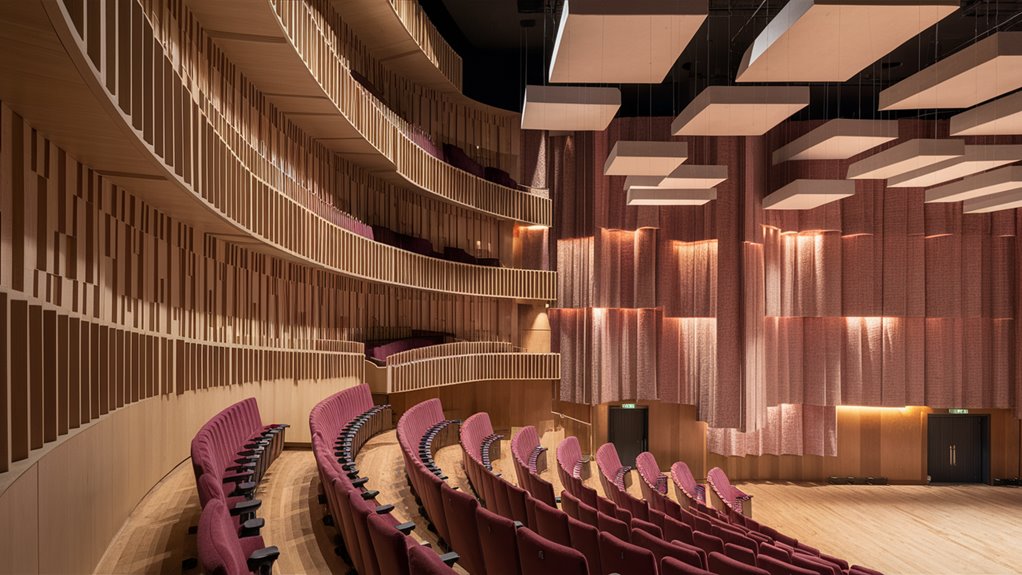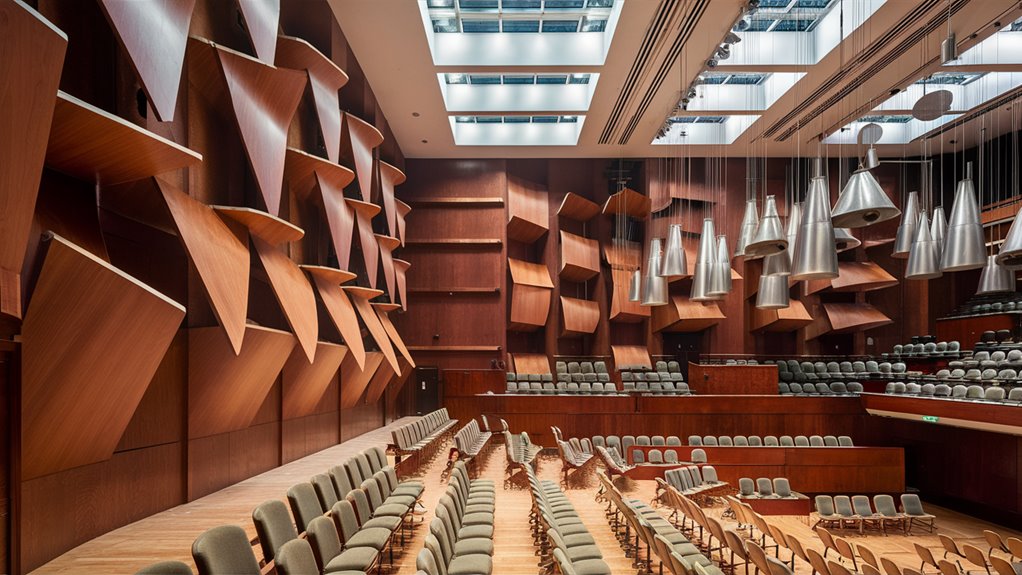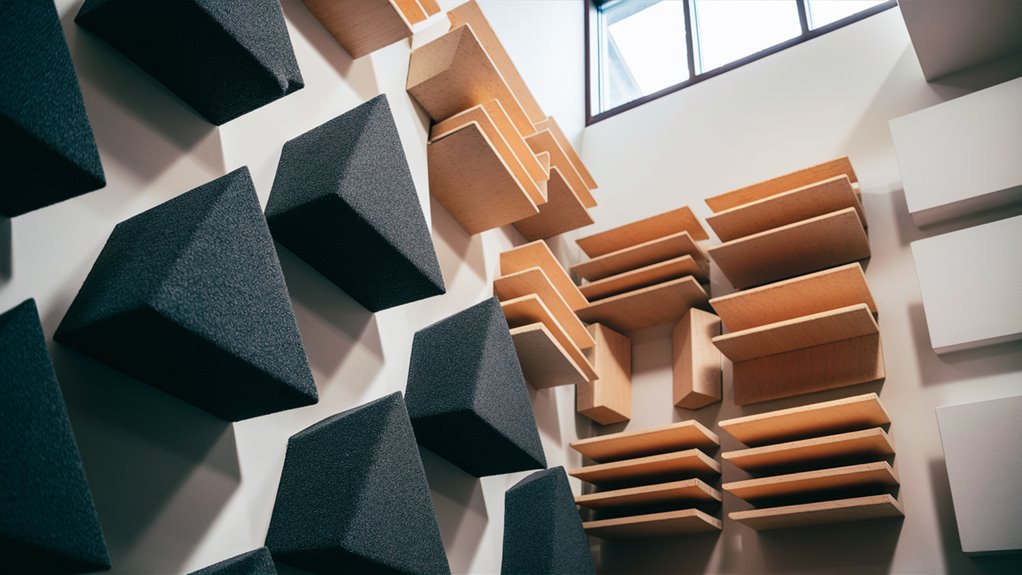
How to Set Up Venue Sound

Basics of How Sound Moves
Sound waves go through air at 343 meters each second, starting complex chains through three main methods: bounce, soak, and scatter. Knowing these parts is a must to make great sound in any place.
Key Room Sizes and Shapes
Great sound starts with right room size. Use these tried mixes:
- 2:3:5 mix for box rooms
- 1:1.6:2.5 mix for odd rooms
- At least 12-foot high roof for places under 2000 square feet
Smart Plan for Acoustic Stuff
Put in stuff that can soak sound, from 0.3-0.95, to:
- Keep low tones in check (20-200 Hz)
- Stop tone build-ups
- Even out sound bounce and soak
Where to Put Speakers
Set great sound by placing speakers well:
- Fix main speakers 2-3 meters up from where people sit
- Tilt speakers at 10-15 degrees
- Keep a 1:2 ratio from speaker to ear
Check and Make Sound Better
Watch how sound moves using well-known ways:
- RT60 (time it takes to fade)
- STI (how well speech moves)
- Tone tests
- Keep ±3dB stable sound across the area
Use these exact steps to get great sound where you need.
About Sound Waves in Sound Setup
How Sound Waves Move
Sound waves move as changing pressure zones, making areas of push and pull. These waves move at 343 meters each second in a normal room at 20°C. Three main things show how sound moves: speed (Hz), strength (dB), and length (meters).
How Waves Bounce and Meet Surfaces
Waves bounce back at the same angle they hit. Surfaces have absorb levels, from 0.01 for very shiny ones to 0.99 for very soft ones.
Room Sound and Wave Forms
Room tones can be guessed with f = (c/2L), where c is sound speed and L is room size. These sound forms mainly touch tones from 20-200 Hz, changing how bass sounds.
Common Problems in Sound Setup
Key Sound Setup Needs
Even sound in places has several clear setup problems that change sound feel and how we hear. In big rooms, echo times often go over 2.5 seconds, while quick echoes show up between flat walls at 50-100ms.
System Fits and Keeping Sound In
AC sound often goes past the NC-25 (Noise Need) mark, really changing how well we hear talk. Room breaks often are less than STC-45 (Sound Moving Class), making unwanted sound move between rooms.
Building Sound and How to Check It
Room shape really changes sound through first bounce forms coming 20-30ms after direct sound, making comb filter effects with lows at -20dB. Bass collects in corners, making low tone changes up to 12dB between spots to hear.
Need-To-Know on Sound Soak Stuff
About Soak Types
Sound soak stuff split into three main types, each known by clear soak levels (α):
- Porous soaks (α = 0.5-0.95)
- Deep soaks (α = 0.3-0.8)
- Wave soaks (α = 0.4-0.9)
Pro Porous Soak Fixes
Stone wool boards and open-cell foam are top picks for strong porous soaks.
Smart Deep Soak Plans
Low tone care needs right deep soak fixes. Use wood boards and heavy vinyl for main tone zone of 50-500 Hz.
How Room Shape and Size Change Sound

Room Measures and Wave Forms
Room mixes are key in setting how sound acts. The best size mixes of 2:3:5 or 1:1.6:2.5 keep tone build-ups low and wave form issues low. These mixes make sound even all over, cutting odd tone jumps and sound weirdness.
Roof Height and Echo Time
Echo time (RT60) links right to roof height. Each double in up space adds about 0.4-second RT60 rise. Show places under 2000 square feet need roofs at least 12 feet high to keep sound right.
Wall Shape and How Sound Moves
Quick echoes start from flat wall faces, needing smart building fixes such as wall angles between 5-10 degrees or using not-flat surfaces to handle sound bounce forms well.
Soaking Sound vs Scattering Sound: The Full Guide
Basics of Sound Fixes
Sound fixes count on two main ways: sound soak and sound scatter. Each way helps make great sound spots.
Basics of Sound Soak
Sound soak turns sound power to heat through rub. Key parts to watch include NRC from 0.0 to 1.0.
How Sound Scatters
Sound scatter spreads sound waves in lots of ways while keeping power. Points to see include scatter levels showing how well it works.
Best Way to Set It Up
The top sound fix mixes both ways. Suggested mix is 60% soak to 40% scatter for spots under 5000 cubic feet 호치민밤문화
Smart Ways to Put Speakers
Main Spots for Speakers
Smart speaker spots start with right room size checks and target SPL needs. Must-check start points include coverage angles and potential bounce spots that could change sound feel.
Best High and Angle Spots
Main speaker spots need careful set-up 2-3 meters up from where people sit, with a down look of 10-15 degrees.
More Than One Speaker Set-up
When using more than one speaker system, use the 1.4x space rule. This cuts unwanted comb filter effects and ensures smooth sound all over the place.
How to Check Sound Moves
Must-Know Sound Parts
Checking sound moves needs exact counts of six main parts that set place sound feel. These parts include echo time (RT60) and tone reply.
Pro Checking Ways
Set measuring mics put right in the spot get full sound facts. RT60 checks use push reply tests to track sound drop across 60dB make your celebration
Deep Sound Checks
Back sound checks need room SPL reads with A-weighted screens to make right NC/NR bends. EDT checks look at how echo feels.


